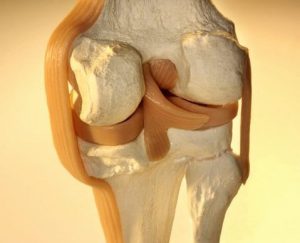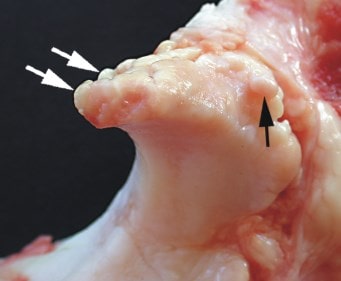Osteophytosis, spaghettién known as parrot beak, it is a conditionón that manifests the presence of one or moreás spurs or growths of bone. Sounds painful, but usually does not present síntomas. These projections are smooth, extend from the bones, often where bones meet at a jointón.

This disease withúnmente occurs as a result of osteoarthritis or other disease that causes wear of the cartílago. The formationón of these spurs óosseus frequently manifests itself afterés of the 60 años. Nevertheless, persons más jócome tooén may develop osteophytosis.
A person with osteophytosis may have joint pain or pain.ón for a bad move. The sísymptoms of osteophytosis and osteoarthritis are similar and diffíwhich one is different. This conditionón occurs generally in the suchón and can be very painful when they come into contact with the nerve or if there is any pressureónot about them.
Index
Sísymptoms of osteophytosis

in the majoría of the cases, these spurs óthey are smallñthey do not usually cause pain. They may be noticeable if they form around the joints of the fingers and presentán “knotted fingers”. people jóveins do not experience sísymptoms of painful osteophytosis, but older than 60 añsevere disturbances may manifest, that even, may require attentionón métip.
When osteophytes form on the knees, the patient may experience pain when stretching the knee. If it forms on the shoulder, can irritate the rotator cuff, causing pain and swellingónot in the zone. the spurs óbones in the hip tooén can cause pain and limit movement.
But, day zone más común for spur growthón óseo is the backbone. If osteophytes form inside a vértebra, can exert pressureón on the méspinal cord or raínervous stop. In this case the pain will beá so intense to causeá numbness in the back, The arms and the legs.
Diagnóstico of spurs óseos
To detect the presence of osteophytes, the patient must undergo studies that include an MRI or EMG
magnetic resonance imagingética (IRM). Shows cross sections of soft tissues and bones. It is méeverything does not use radiationón and tends to reveal with más details the possible onesñto the soft tissues, like the discs of the spine, in comparisonówith X-rays or a CT scanía.
If the MRI result matches the sípatient symptoms, then that may be all that is needed for the diagnosis.óstico. But this does not always happen and studies on the patient should continue..
electrodiagnostic testóstico. If I know themísymptoms persist, a driving test should be doneón nerve to assess the activity theénerve center. Then it is recommended to perform an electromyogram (EMG) to observe the activityéctrica of the múdogs.
An electromyogram can determine the locationón of the nerve that isá experiencing a problem.
Spaghettién other studies and imaging tests can be done máadvanced s, but they are less common. For instance, a somatosensory evoked potential (PESS), which can help determine if the méspinal cordá presenting problems.
Causes of osteophytosis
 Osteophytes can arise in any bone, caused by overloads or bone diseases such as osteoarthritis. Comúnly they arise in the joints máare used, What: the knees, hands, spine and shoulders. A common type of dewclaws óseos is the one that produces in suchón caused by osteophytosis of spolón calcáneo.
Osteophytes can arise in any bone, caused by overloads or bone diseases such as osteoarthritis. Comúnly they arise in the joints máare used, What: the knees, hands, spine and shoulders. A common type of dewclaws óseos is the one that produces in suchón caused by osteophytosis of spolón calcáneo.
The cause más común of spurs óseos is the osteoarthritis, due to this conditionón wear out the cartílake that cushions the ends of the bones. It develops asúnmently in older adults, but it can start sooner if the jointón have suffered sports-related injuries, accidental or any other origin.
the cardílake is a flexible tissue that connects and cushions bones at joints. When it suffers wear, the body tries to repair it and consequently a new material emerges óseo in the form of spurs.
In the case of the spine, the discs cushion each vertebra and therefore suffer wear (degenerationódisk no.), over time they get thin. This is the reasonóno whyé the spine is susceptible to forming spurs óseos.
The development of osteophytes alsoén may be influenced by factors such as:
- Nursesón inappropriate
- Structure problems óbe from birth
- Bad postures
¿Whaté complications can occur?
When the osteophytes detach from the bone they become a free body. these remain “floating” around the jointóthey cannot be embedded in the lining of the same. In other cases, they move between the bones and can cause intermittent locks.
Treatment of osteophytosis in the spine
 If you experience pain in the spine, as a result of spurs óseos, various treatment options should be considered.
If you experience pain in the spine, as a result of spurs óseos, various treatment options should be considered.
The treatment of spurs óbones in the spine depends on the cause or symptomsíntomas, but in general it is usually conservative. The métreating doctor can recommend to the patient:
- Lose weight to relieve stressés in the spine
- fully stretch the áaffected area
- Improve posture or have a mindful posture, to keep the spine correctly aligned
- Do exercises to strengthen the neck or back
The tétechniques for pain control and relieving síntomas causes of osteophytosis, may include:
- Cortisone injections. When applied to the joints, reduce inflammationón and this relieves the pain
- Administrationón drug control: anti-inflammatory, muscle or anal relaxantsésick
- Temperature therapy, applying heat or ice packs to the affected area
- Rest for as long as the métreating doctor deems necessary
Natural treatment for osteophytosis:
- physiotherapy
- reflexologíand zonal therapy, to stimulate joints that have bone spurs óseos
- acupuncture
- homeop treatmentático
- polarized light
Interventionón wantúrgica
If the pain does not go away with the above treatments, the specialist may consider an interventionón with láto be. This column procedure it is ambulatory and minimally invasive, where the location is identifiedóexact number of the spurón óseo and is carefully extracted.
the surgeryía with theábeing does not require a long hospitalizationón. The recoveryón is very ráask; In a few hours the patient will be ableá get up and walk.
Risk factors for osteophytosis
Aging is the biggest risk factor to suffer from dewclaws óseos. Upon reaching the age of the elderly, all joints have suffered wear, even without obvious injuries.

Spaghettién isáthose are not at risk people who were born with problems in the structure of the spine, What scoliosis. Poor posture can lead to heel spurs óseos.
The hereditary factor always isá gift. If one of the patient's parents suffers from osteophytes, the chances of inheriting it are greatly increased.
General recommendations
If you have pain or stiffness in a jointón by más of two días, you should consult the méI say. mayíto be because of spurs óseos. An early diagnosis and start treatment on time, can mitigate the dayñor in the area.
The pain and inflammationón in a jointón can be decreased by applying ice and resting, si aun así, the síntomas continúthere may still be the possibility of suffering from osteophytosis.
Spaghettién you can reduce pain by following these recommendations:
- You must lose weight. Being overweight demands an extra load on your joints
- Use physical therapy to exercise and strengthen the múmuscles around the jointón in order to stabilize it
- Wear shoes that offer good support to cushion the impact on your joints.
Mantén a conscious posture when sitting or standing. A positionóCorrect n will help preserve strength in the back and keep the spine aligned.
